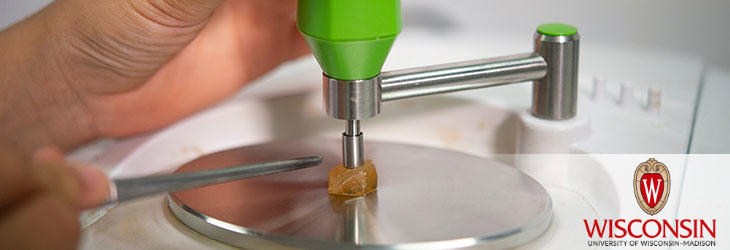Research Tools

Membrane Cascade-Based Separation
WARF: P04423US
Inventors: Edwin Lightfoot
The Wisconsin Alumni Research Foundation (WARF) is seeking commercial partners interested in developing a counter flow cascade separation system for purifying biological components.
Overview
Purification of biological components, including viruses, plasmids, proteins and small molecules, typically relies on chromatography for most of the separation steps. Membrane filtration cascades provide an attractive alternative that could potentially improve yield and simplify downstream purification.
The Invention
A UW-Madison researcher has developed a counter flow cascade separation system for separating two solutes in a solvent. The system consists of a series of interconnected stages through which a solution flows. At each stage, a diafiltration membrane that is selectively permeable to the first solute divides the solution into a permeate flow containing the first solute, and a retentate flow containing the second solute.
After passing through the diafilter, the permeate flow passes through an ultrafiltration membrane, which allows only the solvent to pass through. The ultrafilter removes excess solvent from the permeate flow and recycles it back into the system.
Each stage after the first accepts a mixed flow stream formed by combining the retentate flow and permeate flow from different stages. The flow rates are adjusted so that the first and second solutes are present in the same molar ratio in the mixed flow stream.
After passing through the diafilter, the permeate flow passes through an ultrafiltration membrane, which allows only the solvent to pass through. The ultrafilter removes excess solvent from the permeate flow and recycles it back into the system.
Each stage after the first accepts a mixed flow stream formed by combining the retentate flow and permeate flow from different stages. The flow rates are adjusted so that the first and second solutes are present in the same molar ratio in the mixed flow stream.
Applications
- Purification of biological components
Key Benefits
- Diafiltration-ultrafiltration design facilitates separation of solute fractions and solvent management
- Stages are combined to form a counter flow cascade separation system capable of operation approaching an ideal counter flow cascade
- Can be operated in batch mode
- Useful to companies producing high-value biological materials, including soluble proteins, nucleic acids, viruses, and small molecules
Tech Fields
For current licensing status, please contact Jennifer Gottwald at [javascript protected email address] or 608-960-9854